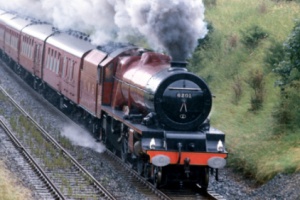 Despite having such poor vision that he drove with a restricted (auto) license, a train engineer was medically recertified by his employer, Union Pacific Railroad. Those vision problems contributed to fatal 2012 head-on collision between two freight trains in Oklahoma, according to the National Transportation Safety Board (NTSB).
Despite having such poor vision that he drove with a restricted (auto) license, a train engineer was medically recertified by his employer, Union Pacific Railroad. Those vision problems contributed to fatal 2012 head-on collision between two freight trains in Oklahoma, according to the National Transportation Safety Board (NTSB).
The June 24 accident killed the engineer and conductor of the eastbound trains and the engineer of the westbound train. The conductor of the westbound train was able to jump to safety.
Both trains derailed and several fuel tanks ruptured, releasing diesel fuel that ignited and burned. Damage was estimated at $14.8 million.
Conductor disengaged from duties
The NTSB determined that eastbound train’s engineer was unable to see and correctly interpret wayside signals. Other factors in the accident: the conductor’s disengagement from his duties and the lack of positive train control, which would have stopped the train and prevented the collision regardless of the crew’s inaction.
During the investigation, the NTSB learned that the engineer had a history of vision problems and, at the time of the crash, impaired visual acuity and defective color vision. Additionally, Union Pacific did not comply with internal company policy when it medically recertified the eastbound train engineer. The NTSB has recommended that the Federal Railroad Administration improve their medical certification procedures for employees in safety-sensitive positions.
A "significant" safety gap
"This engineer had a restricted driver’s license due to his poor vision, yet, he had no similar restrictions on his ability to operate a mile long freight train," said Chairman Deborah A.P. Hersman. “This accident highlights a significant safety gap in the rail industry, which must be quickly remedied."
The event recorder data from the eastbound train showed throttle and brake activity as the crew passed two approach signals, without a reduction in speed as required. The eastbound train also passed a stop signal while travelling at 65 miles per hour. Neither the eastbound train's engineer nor conductor took action to slow or stop the train until seconds before the collision, when emergency braking was initiated.
"Yet another PTC preventable accident"
"While the debate continues regarding delaying implementation of the provisions of the Rail Safety Improvement Act, today we deliberated on yet another PTC preventable accident," said Hersman. "As a result, we recommended that FRA provide more accountability and transparency about the progress towards PTC. The discussion should not be focused on when PTC won't be implemented, but when it WILL be implemented."
As a result of this investigation, the NTSB made recommendations to the Federal Railroad Administration, the Brotherhood of Locomotive Engineers and Trainmen, the United Transportation Union, all Class I Railroads, Union Pacific and all railroads subject to the positive train control provision of the Rail Safety Improvement Act of 2008. To view the summary of this accident including findings, probable cause and recommendations, click on the following link:
www.ntsb.gov/news/events/2013/goodwell_ok_board/Goodwell_Synopsis.pdf.



